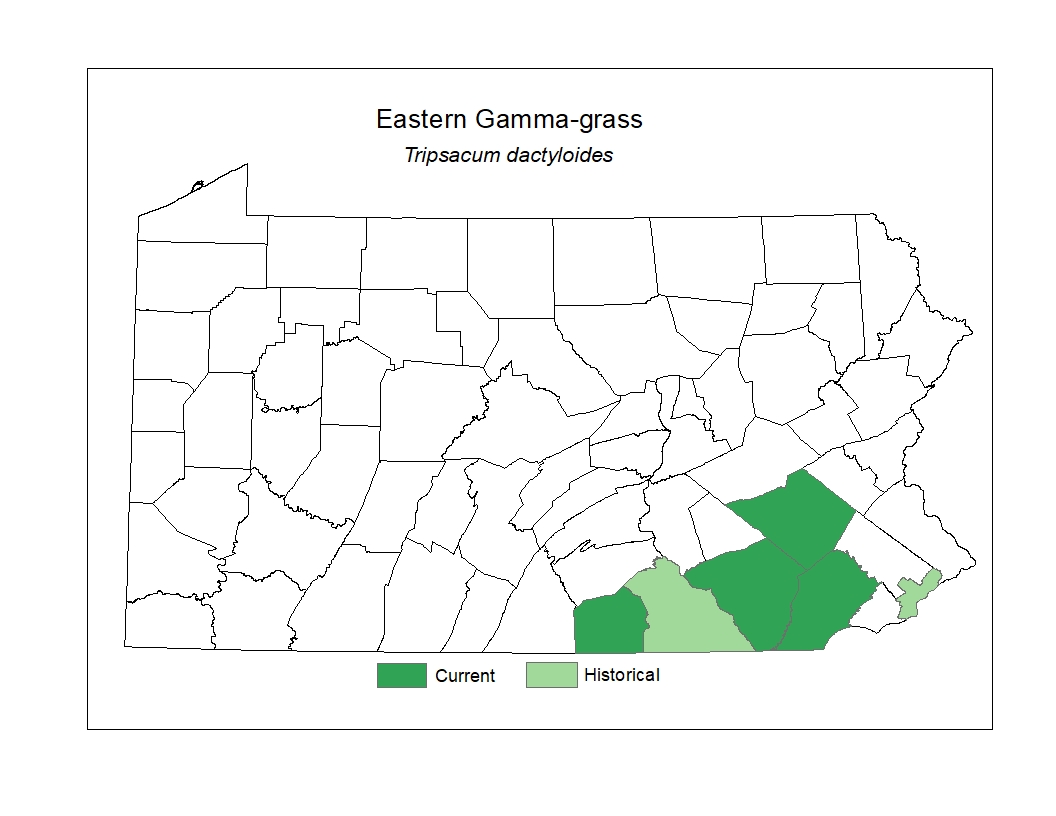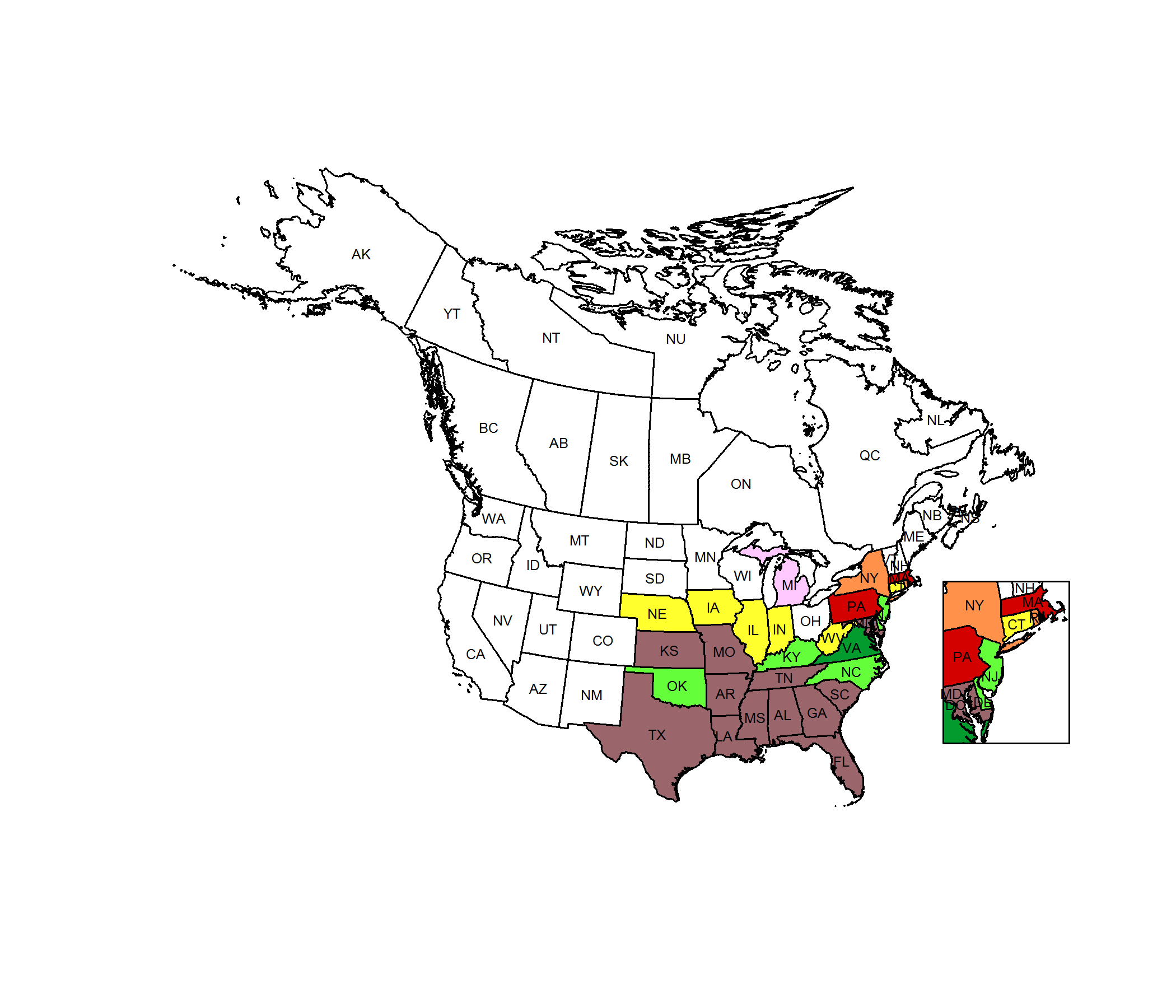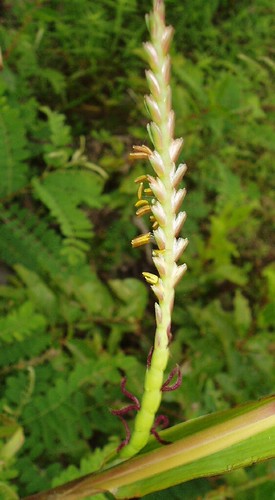 Species Factsheets
Species Factsheets
Tripsacum dactyloides
Eastern Gamagrass
State Status: TU
PBS Status: Pennsylvania Endangered (PE)
Federal Status:
Global Rank: G5
![]() rank interpretation
rank interpretation
State Rank: S1
Did You Know?
This species is interesting due to its terminal inflorescences having separate male and female flowers.
Description
Eastern gamagrass (Tripsacum dactyloides) is a tall perennial grass that usually stands 1.2-2.4m tall, often forming conspicuous clumps. The leaves are flat, linear, and up to 3cm wide and 30-70cm long. The flowers, appearing from July to October, are arranged in one to four thick spikes that emerge from the top of the stem. The individual flowers are unisexual, with male flowers located at the top of the spike and the female flowers being embedded in swollen stem segments at the base of the spike.
Rank Justification
Critically imperiled in the nation or state because of extreme rarity (often 5 or fewer occurrences) or because of some factor(s) such as very steep declines making it especially vulnerable to extirpation from the state.
PABS
The PA Biological Survey considers eastern gamagrass to be a species of special concern, based on the relatively few occurrences that have been recently documented and its wetland habitat. It has a PA legal rarity status of Undetermined and a PABS suggested rarity status of Endangered.
Habitat
It grows in damp to wet places in openings, streambanks, islands in the Susquehanna River, and sometimes in disturbed ground.
Survey Dates
Flowers July - October
Distribution
In Pennsylvania, it represents a southerly species, and has been documented historically in some of the southeastern counties.

Threats
With fewer than ten populations in PA, eastern gamma-grass is vulnerable to habitat loss and changes in hydrology that might influence habitat quality, such as damming or draining rivers and increased groundwater use. Conversion of floodplain forests, browsing by deer, and encroachment by invasive plants may degrade the quality of existing habitat. Nutrient enriched run-off from surrounding land can affect the water chemistry to which this species is sensitive.
Management
Conservation of eastern gamagrass will depend upon the protection of existing populations and maintenance of its required habitat. This may include removing invasive plants and creating buffers to help moderate the effects of run-off and flooding. Sustaining appropriate water levels will also be important for maintaining high quality habitats.
Conservation Status Map


NatureServe. 2017. NatureServe Explorer: An online encyclopedia of life [web application]. Version 7.1. NatureServe, Arlington, Virginia. Available https://explorer.natureserve.org.
https://www.wildflower.org/plants/result.php?id_plant=trda3
- NatureServe. 2018. NatureServe Explorer: An online encyclopedia of life [web application]. Version 7.1. NatureServe, Arlington, Virginia. Available at https://www.natureserve.org/explorer
- Pennsylvania Natural Heritage Program. 2018.
- Rhoads, A.F. and W.M. Klein, Jr. 1993. The Vascular Flora of Pennsylvania. American Philosophical Society, Philadelphia, Pennsylvania. Rhoads, A.F. and T.A. Block.
- 2007. The Plants of Pennsylvania: An Illustrated Manual. 2nd edition. University of Pennsylvania Press, Philadelphia, Pennsylvania.







